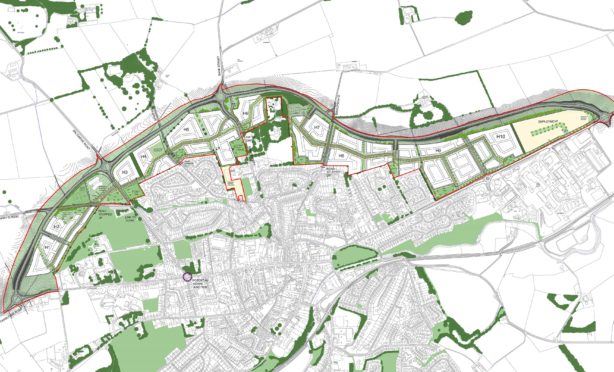Plans for a district heating scheme to harness energy from waste water have been lodged by Sustainable Cupar.
The community group hopes the scheme will heat homes in the Cupar North expansion, where close to 1,500 new houses are planned.
Gordon Pay from Sustainable Cupar said the project was in line with national policy for reducing carbon emissions. He said it was technology already tried and tested elsewhere.
He said: “This is very viable. We don’t see why this shouldn’t be developed. It really ticks all the boxes.
“It depends how it is developed but I think it has the potential to pretty much serve the whole of Cupar.”
The proposal is for a district heating energy centre, which would harness heat from the local sewer network. The resulting heat energy would be stored in a thermal energy store.
Mr Pay said: “The stuff that we put down the drain contains a lot of hot water. That exchanges heat with clean fluid, which goes into a heat pump.”
A large concrete silo at the Cupar Trading Estate has been mooted as a potential thermal energy store.
Sustainable Cupar, which has applied for planning permission in principal, anticipates the scheme could supply heat to Cupar Trading Estate, Cupar Business Park, Prestonhall Industrial Estate and the Cupar North development.
A report by SHARC Energy Systems said the heat pumps would be “able to deliver more than enough energy for the new homes” at Cupar North.
Mr Pay said the next hurdle to overcome was putting together a business case.
And the SHARC report outlined other issues that would need further investigation.
The SHARC report said: “There is a lack of information on real thermal demand in the form of energy bills or half hourly data.
“It will not be possible to progress any heat network or energy centre/borehole array designs without obtaining this information.
“Sewer flow temperature is required at the inlet to the sewage works. This is not currently available from Scottish Water.
“Further structural assessment of the concrete silo is required before it could realistically be used as a thermal store. Actual storage volume is to be established.”










